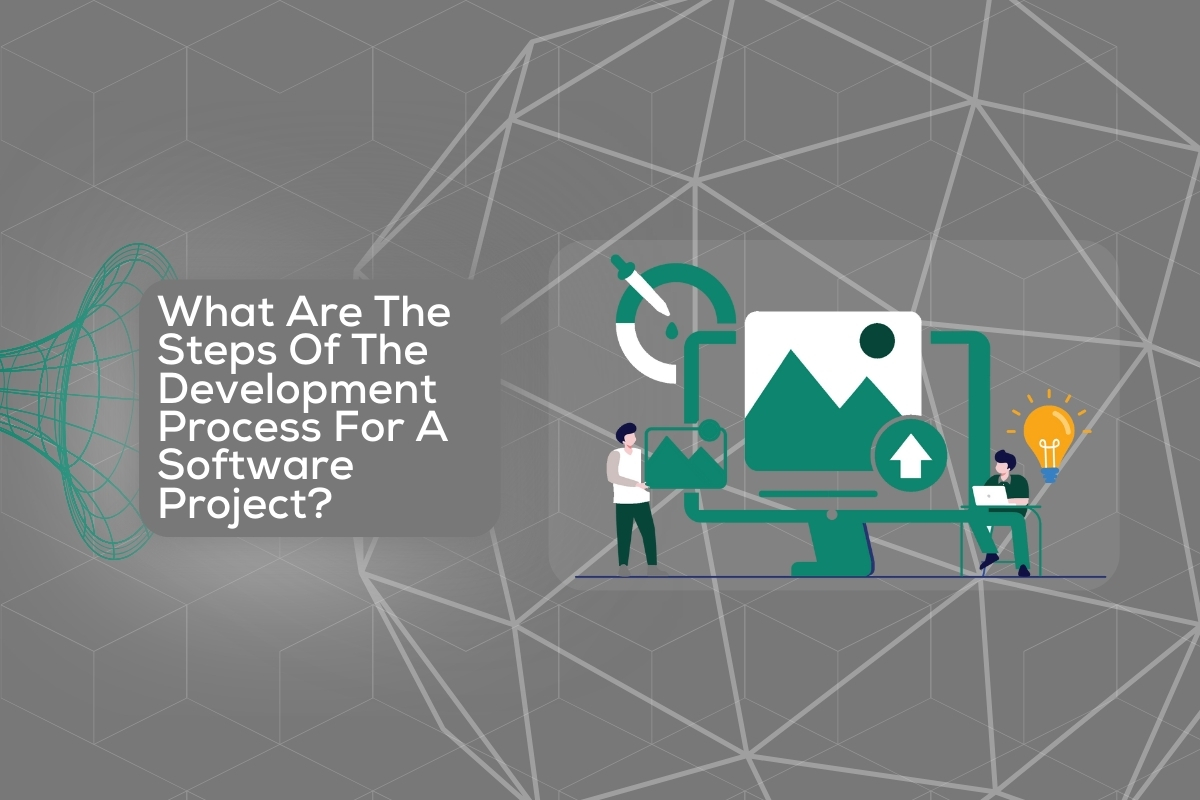One crucial question arises when every developer embarks on a journey of software development: what are the steps of the development process for a software project? Having the right answer to this question will ensure successful and efficient development, providing you with the roadmap for the entire process. Let’s explain all the necessary software development process steps that will transform a simple idea into a fully functional app.
What Is a Software Development Project?
A software development project is a structured and purpose-driven effort to create, modify, or enhance software applications or systems. It typically involves a team of skilled professionals working together to achieve specific goals.
For example, some steps in software development are delivering a new software product, updating an existing application, or automating a particular process. If you want to create a top-notch project, consider all the trends, and let’s get going.

What Are the Steps of the Development Process for a Software Project?
The steps of the development process for a software project are the blueprint that transforms ideas into functional, user-friendly apps. That being said, here are the seven crucial stages your app development team should take to make fully optimized software.
Analysis Is One of the Fist Software Development Steps
The foundation of any successful software project lies in a thorough analysis. This stage is all about gathering critical information by engaging with stakeholders, clients, and potential users. That way, you’ll fully understand their needs, expectations, and the problems the software intends to solve. Just consider that it takes from four to nine months on average to have a finished project.
If you want to finish in this timeline, the first thing is to meticulously examine project goals, technical requirements, and potential constraints. This comprehensive understanding guides the entire project, ensuring that subsequent steps are aligned with the project’s objectives.
Planning Is Like Building a Roadmap
Once the analysis is complete, planning sets the course for how the project will be executed. This strategic phase involves creating a detailed project plan that outlines timelines, allocates resources effectively, and sets a budget. It also includes risk assessment, where potential challenges are identified and mitigation strategies are developed. Effective planning acts as a roadmap, providing clear direction and setting expectations for the project team and stakeholders.
Design Has to Be UI and UX-Focused
In the design phase, the team creates the visual aspects of the product. This aspect of the process is commonly referred to as user interface (UI) design, which shapes the user’s perception of the application. A smartphone user engages with 10 applications daily, which makes having a solid mobile app architecture a must.
However, design extends beyond mere aesthetics. While an appealing visual presentation is vital for attracting and retaining users, the seamless and efficient user experience plays a pivotal role in determining whether a user remains engaged with your application over time. The segment of software design that focuses on optimizing user flow for convenience is called user experience (UX) design.
| Good UI/UX | Poor UI/UX |
|---|---|
| Clean and straightforward interface for faster task completion | Challenging app flow and incomplete tasks |
| Faster app loading and improved efficiency | Slower page loading and requests |
| Inclusive design with accessibility features | Users may bypass security features |
| Instant and satisfying user interactions | Delayed or unsatisfactory interactions |
Development Phase Implements the Vision in the Project
With a solid design in place, the development phase brings the project to life by using top programming languages (one of the most used languages is JavaScript). Developers work on implementing the functionalities defined in the design documents, adhering to coding standards to ensure readability, maintainability, and performance. This phase is iterative, with developers often working in small increments to build features, test them, and then refine them as needed.

Testing Step Ensures Excellence
Quality assurance (QA) is important, and the testing phase is dedicated to ensuring the software works as intended. This involves a series of tests, including unit testing, where individual components are tested for functionality.
Integration testing ensures that different parts of the software work together seamlessly. The user acceptance testing is where actual users validate the software against their requirements. This rigorous testing process helps identify any defects or issues that need to be resolved before the software can be deployed.
Deployment Brings the Project to the Active Base
If this was the six-step process, many people wonder which step in the six-step programming procedure is the final step. It would still be deployment since it puts the software in a live environment where end-users can access it.
The primary objective of deployment is to introduce the software into active use and deliver it to its intended user base. This process covers the following key stages:
- Preparation and planning,
- Final testing,
- Environment setup,
- Release and launch,
- Monitoring and troubleshooting,
- Feedback and updates.
Maintenance Means Sustaining Success
The final phase is an ongoing process that begins after the software is deployed. Maintenance involves regular updates, bug fixes, and enhancements to ensure the software continues to function correctly and meets evolving user needs. It’s also about monitoring performance and responding to user feedback, which can lead to further improvements. Effective maintenance ensures the software remains reliable, secure, and relevant over time.

Let a Top-Notch Mobile App Development Company Help You With Software Development Projects
Turn your innovative ideas into successful software solutions with these seven crucial steps. Contact Juratech Solutions today to get started on your next software project. Whether it’s mobile app development, backend web development, or frontend web development services, explore what we do and let our team of experts guide you through each step of the development process.







